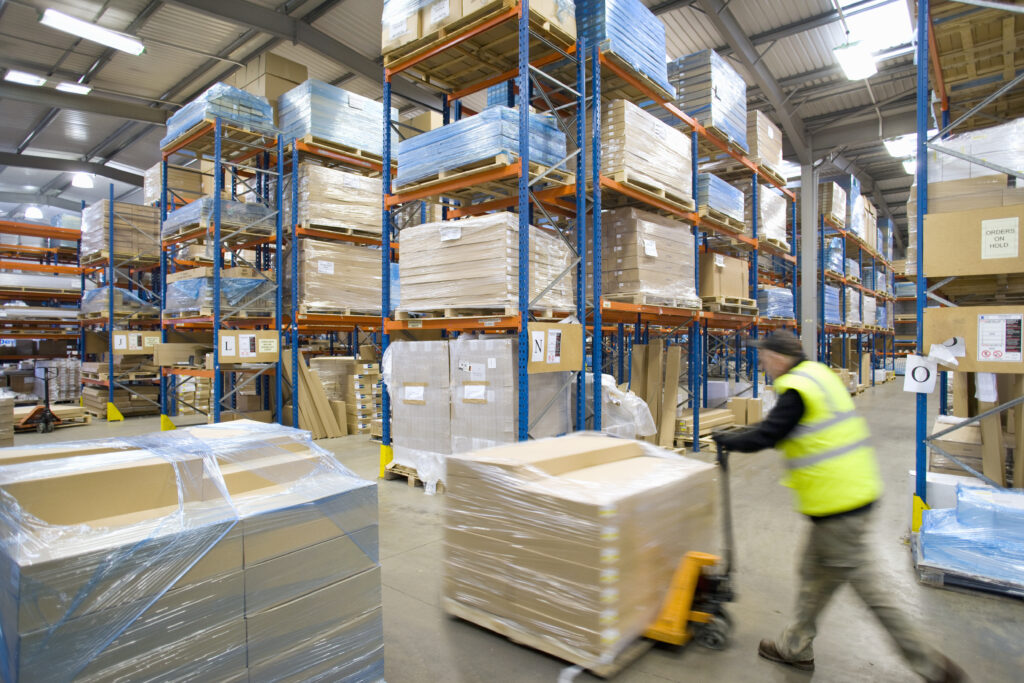Moving a warehouse to a brand new location is a difficult if not overwhelming process. Current warehouses function not only as storehouses or storage facilities, but they also assist in inventory control as well as cost management. Supply chains similarly demand more productivity and efficiency from today’s warehouses.
Moving a warehouse as well as modifying the distribution process adds more work to your already busy schedule. Careful planning and high organizational skills are necessary in order to make the entire process streamlined and efficient. Regardless of your warehouse’s size, below are helpful tips to keep you focused on the task of moving a warehouse from one place to another.
Related article: Storage Containers vs Storage Trailers: Which is Better?
Keep Your Current Inventory in Order
One of the main benefits of organizing your current inventory is the enormous amount of time you are going to save once all you need is in its proper place. Doing so allows you to know where each item or equipment is located.
- Properly sort your inventory and keep an organized record of the items or equipment you have.
- Organize items which will be included in the move
- Remove inventory that you will no longer use, distribute, or is already aged
- Efficiency is key thus the need to throw out items which will no longer serve you or your business
- Items left in your inventory after you have cleaned house needs to be appropriately organized and categorized

Correctly Estimate the Number of Hours You Need for the Move
For efficiency’s sake, it is highly likely that your company’s operations will continue despite the intricacies involved in the move. If this is the case it is best to do the following:
- Spend a sufficient amount of time to outline realistic expectations you have of your workers
- Have an estimate of the number of hours it would take to complete the move. Approximate the hours to be spent on continuing regular warehouse operations.
- As much as possible, place adequate management resources in all aspects of the operation.
- Similarly, allocate additional time for any unexpected events or issues that could come up.
Practice Open Communication with Your Employees
The instance you know how work and responsibilities are to be assigned to employees during the move, ensure that these details are properly communicated to them.
Similarly, express your requirements and expectations to your staff prior to the actual date of the move. Doing so ensures that each aspect of your supply chain will be properly manned and cared for during the entire moving process.
Keep your employees updated on any relevant information. Provide the information on any changes in location. Doing so ensures that no one will be left behind during the move. The end result is a highly organized team working on a common goal.
Assess Your Facility’s Effectiveness
Though moving to a different location may be stressful, it also provides you with the opportunity to make changes to the current layout of your warehouse.
- Be aware of any flaws present within the supply chain. Use this as an opportunity to correct them.
- Assess the workflow of your company and collect your team’s opinion if the workflow is as efficient as it could possibly be.
- Be open to helpful suggestions and new ideas.
- Consider re-configuring departments in order to enhance productivity
- Determine if there are novel ways to create storage racks that will maximize its capacity
- Ask yourself if moving departments to various locations in order to decrease travel time are efficient in the long run
Making changes to your current facility in preparation for your move to the new warehouse location gives your employees the ability to easily adapt to modifications in your new facility’s layout and workflow.
Ensure You Have the Proper Supplies and Equipment in the New Warehouse
Having the appropriate how to buy xanax equipment such as communication devices, forklifts, shelving, safety gear and other critical necessities related to logistics helps ensure that no interruption occurs in your operations during the process of moving a warehouse. If you can, list all the equipment you need in order to ensure that your supplies are sufficient for your requirements.
Prior to arriving at your new facility, ensure that phones are organized. Network connections, water service, electricity, utilities, waste removal must also be established.
In order to minimize any difficulty, decrease the number of deliveries in your current facility during the weeks close to the date of your move. However, some prefer to have the inventory readily available in order for them to no longer have to accept a new shipment in the new warehouse. Both options are advisable. Do what you believe is best for your business.
Make Sure Your Permits are Up-to-date
Presenting incorrect paperwork can delay your move. It is, therefore, a necessity to possess the required building permits, fire permits, or occupancy permits before the move occurs.
Ask for the help of your local municipalities to confirm if you possess the correct paperwork. This is especially critical if you are moving countries, cities, or provinces as codes are different for each place.

Plan Ahead
Create a personnel plan, an emergency evacuation route as well as deliveries that suit the needs of your business.
- The process of moving a warehouse demands employees to perform various roles and responsibilities. Bringing in a temporary staff might be necessary in order to assist the business in settling in.
- Having an emergency evacuation route in your new warehouse is also critical. Know the codes or requirements for evacuation routes. Have these ready prior to moving inventory.
- You can also opt to temporarily receive non-heavy deliveries up until the date of the move in order to lighten your inventory load. You can also choose to receive more deliveries in advance. In order to minimize any problems with shipment and delivery, communicate with shipping managers and coordinate a plan on how deliveries will occur during the warehouse move. Ensure that shipments that must go out are in a marked area in order to lessen the risk of them being accidentally moved to the new warehouse.
Conclusion
Prioritize safety during the entire process of moving a warehouse. You can choose to hire the services of a full-service mover or have your staff use machinery that they do not usually utilize in their daily jobs. Be always alert for any issues that could potentially cause harm to your employees as well as your business.
It is also important to know specific policies related to occupying a given space. Research if space will permit the proper storage of materials or if they will prohibit specific material to be kept. Knowing potential difficulties will help you adequately prepare and face any hurdles during the move.
When moving a warehouse to a new location or building, ensure that you are aware of codes or special permits and requirements. In order to easily track changes, make a list of modifications you are to make in your relocation. Similar to moving into a new office or home, services such as the internet or electricity need to be transferred to the new place. Changes in address and mail forwarding must also be done. These seemingly minor details make a big difference in the long run.
All in all, having a realistic timeline puts discipline and structure during moving a warehouse. Doing so ensures the steady and consistent fulfillment of your goals in moving a warehouse.
Related article: 5 Advantages of Sea Freight Services over Air Freight Services